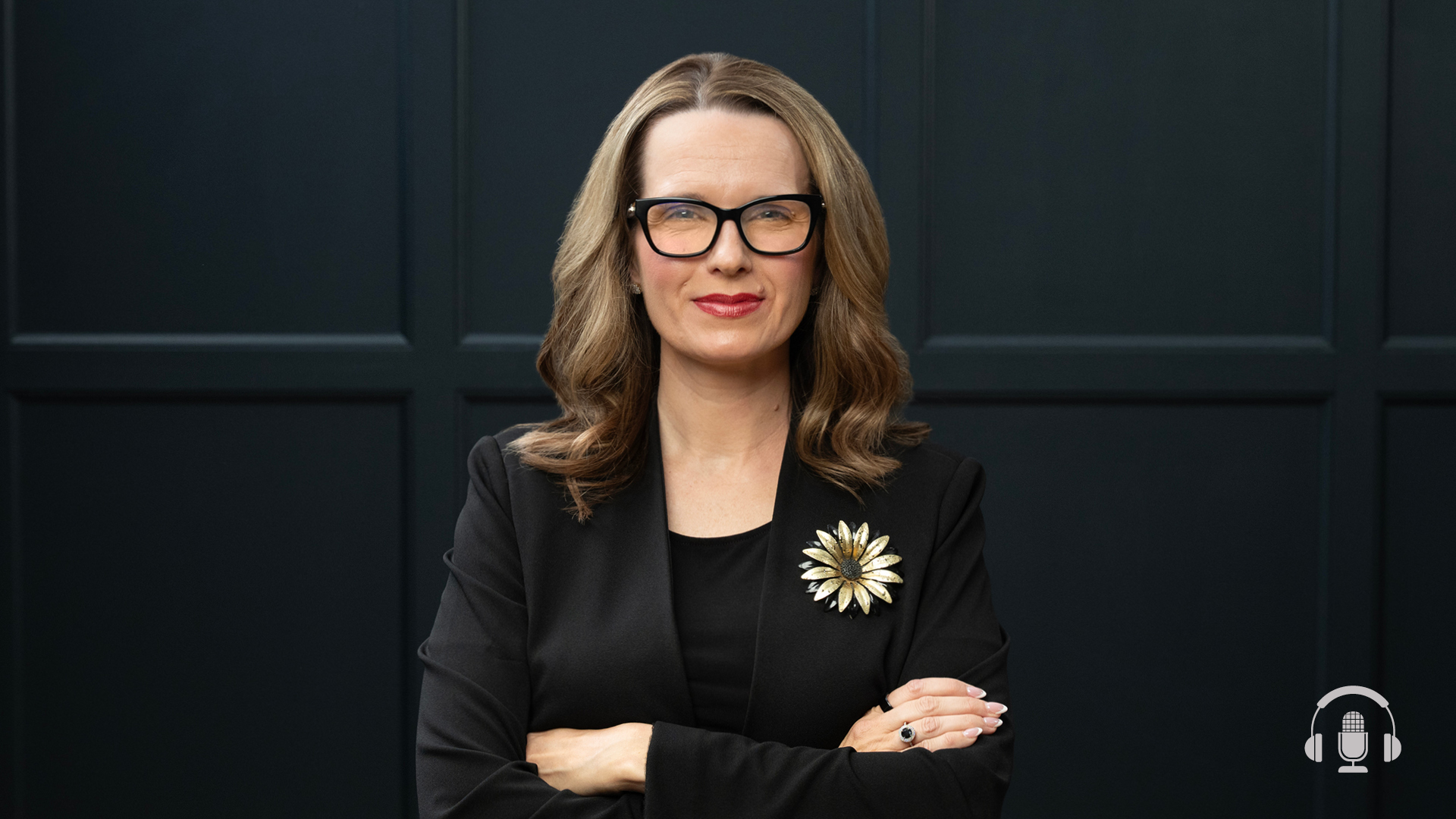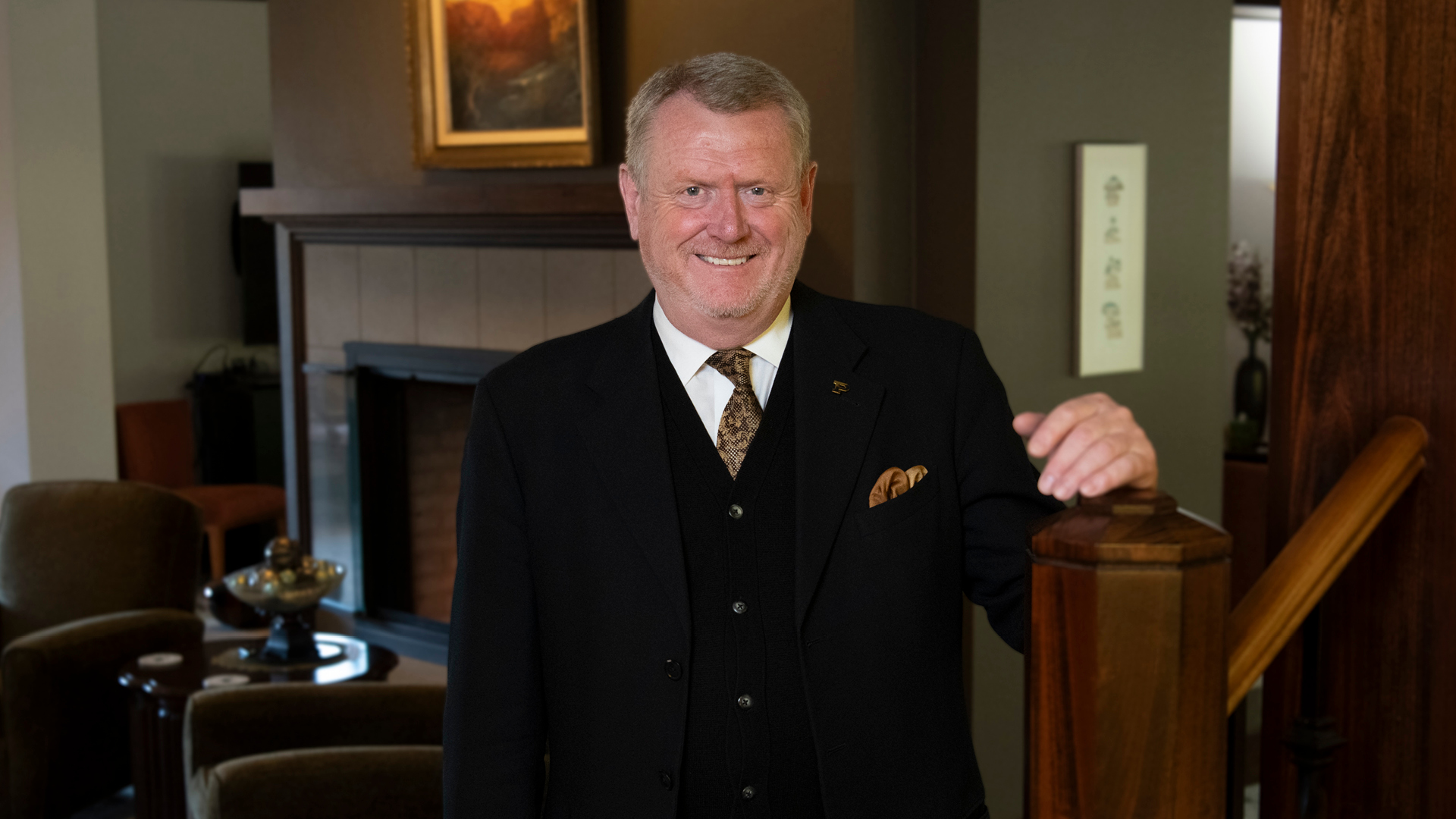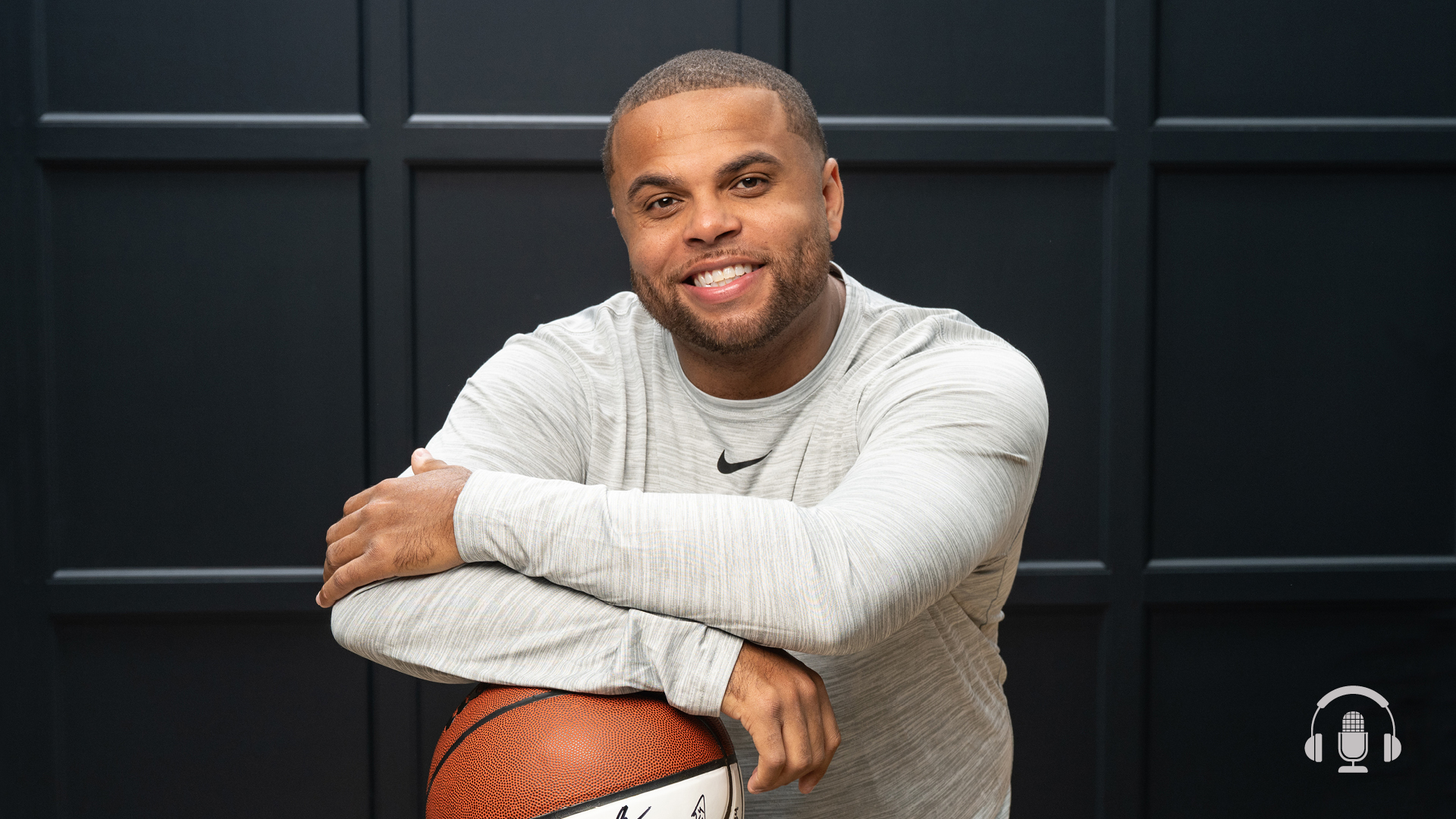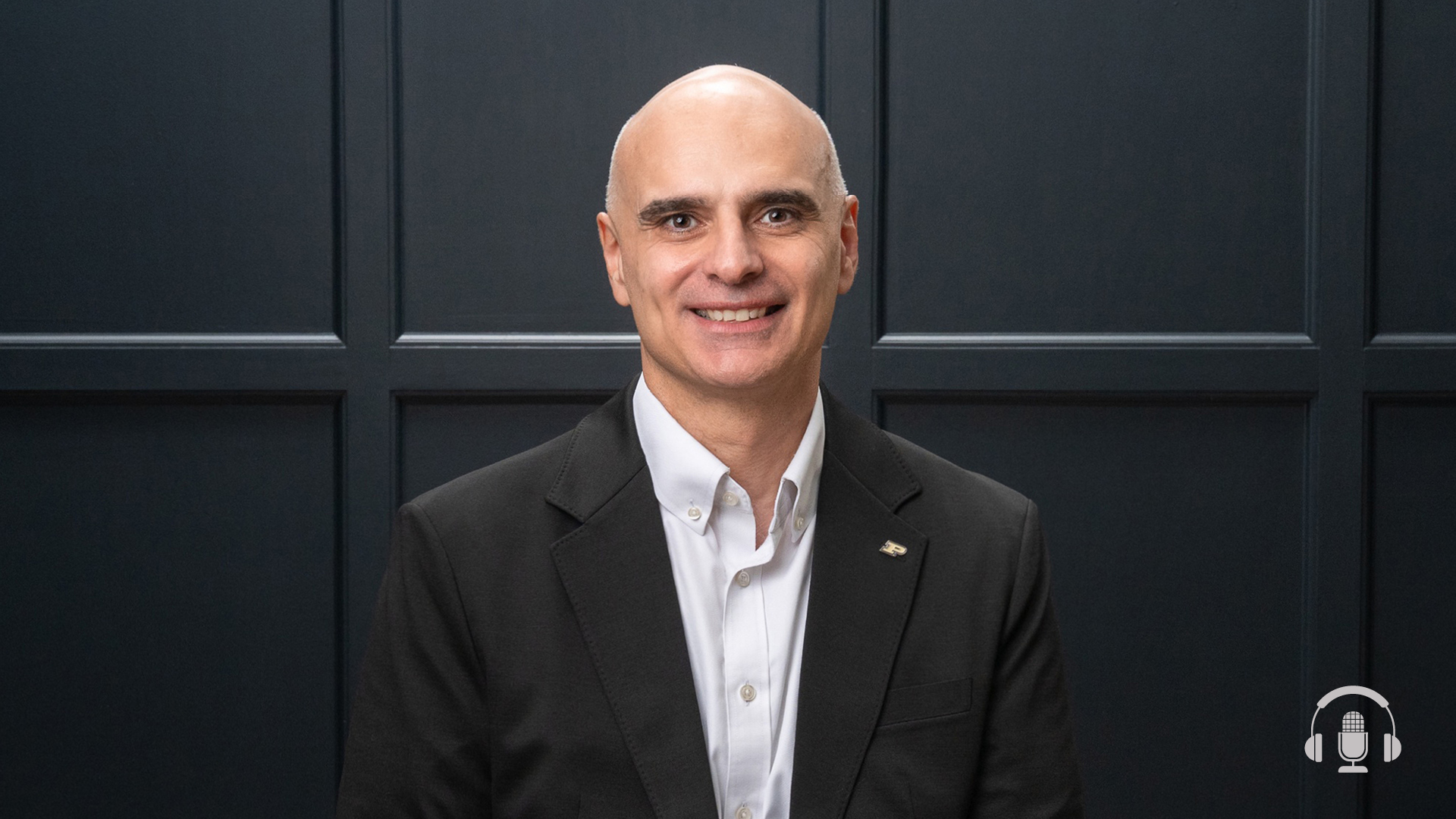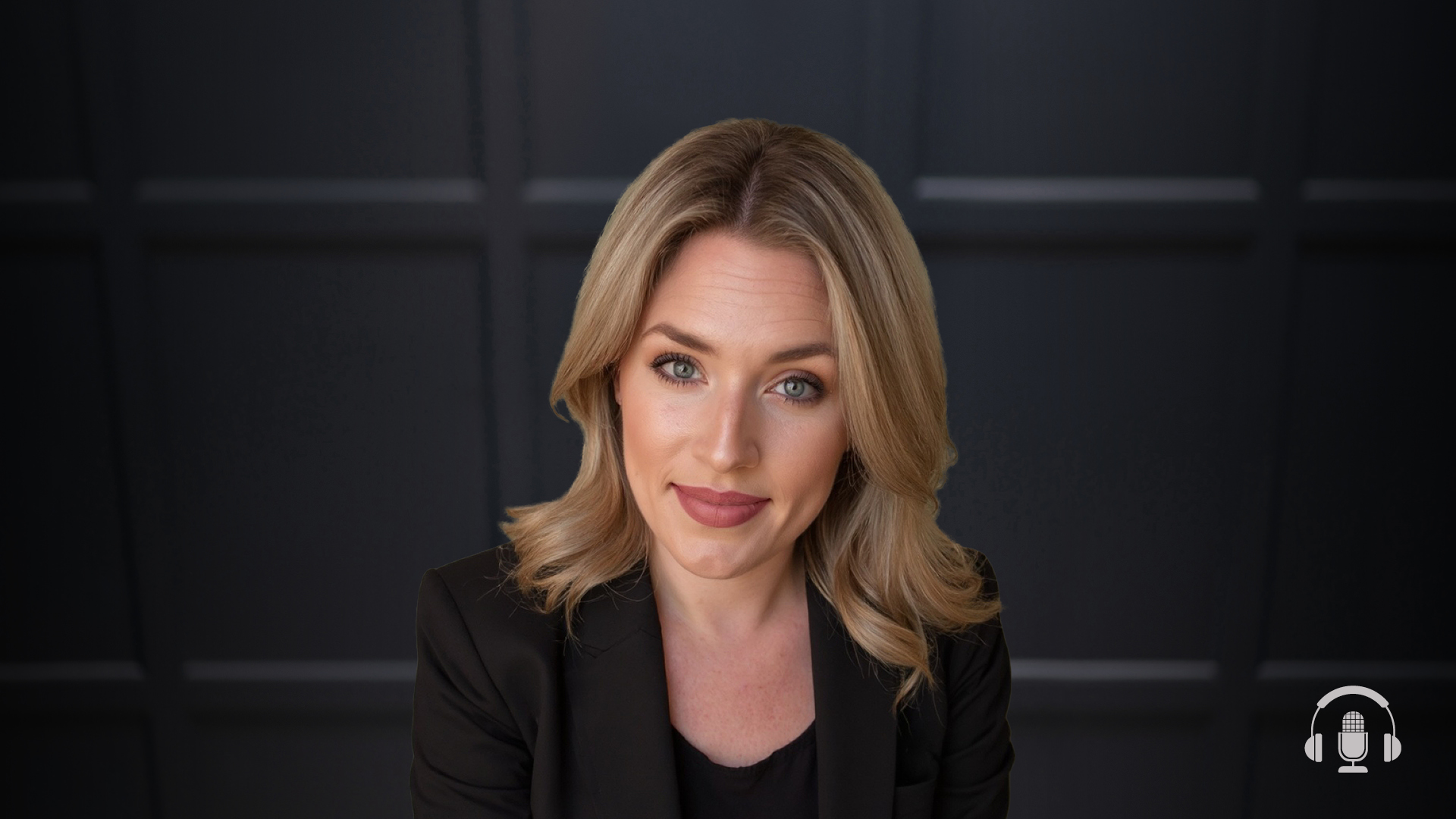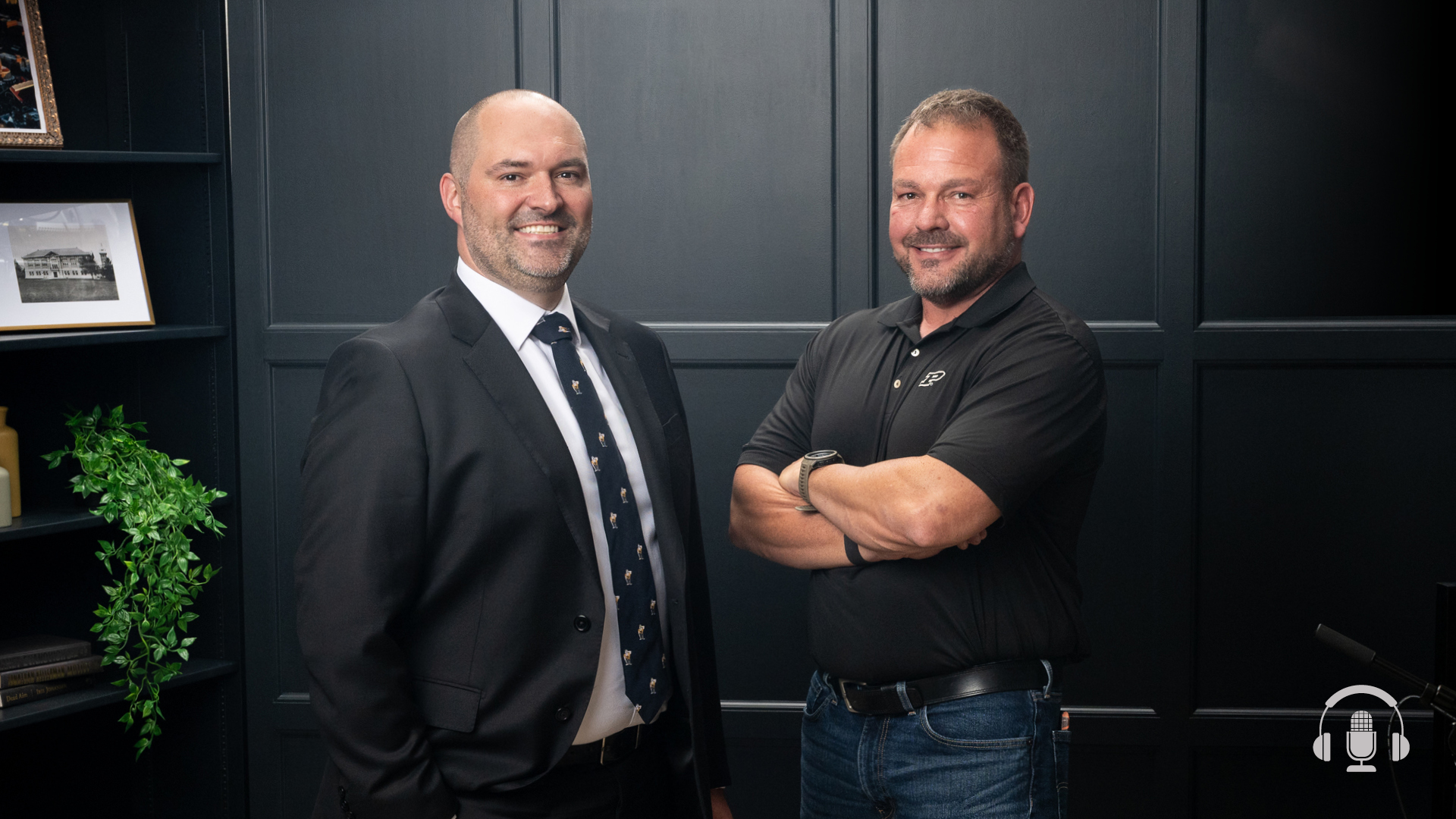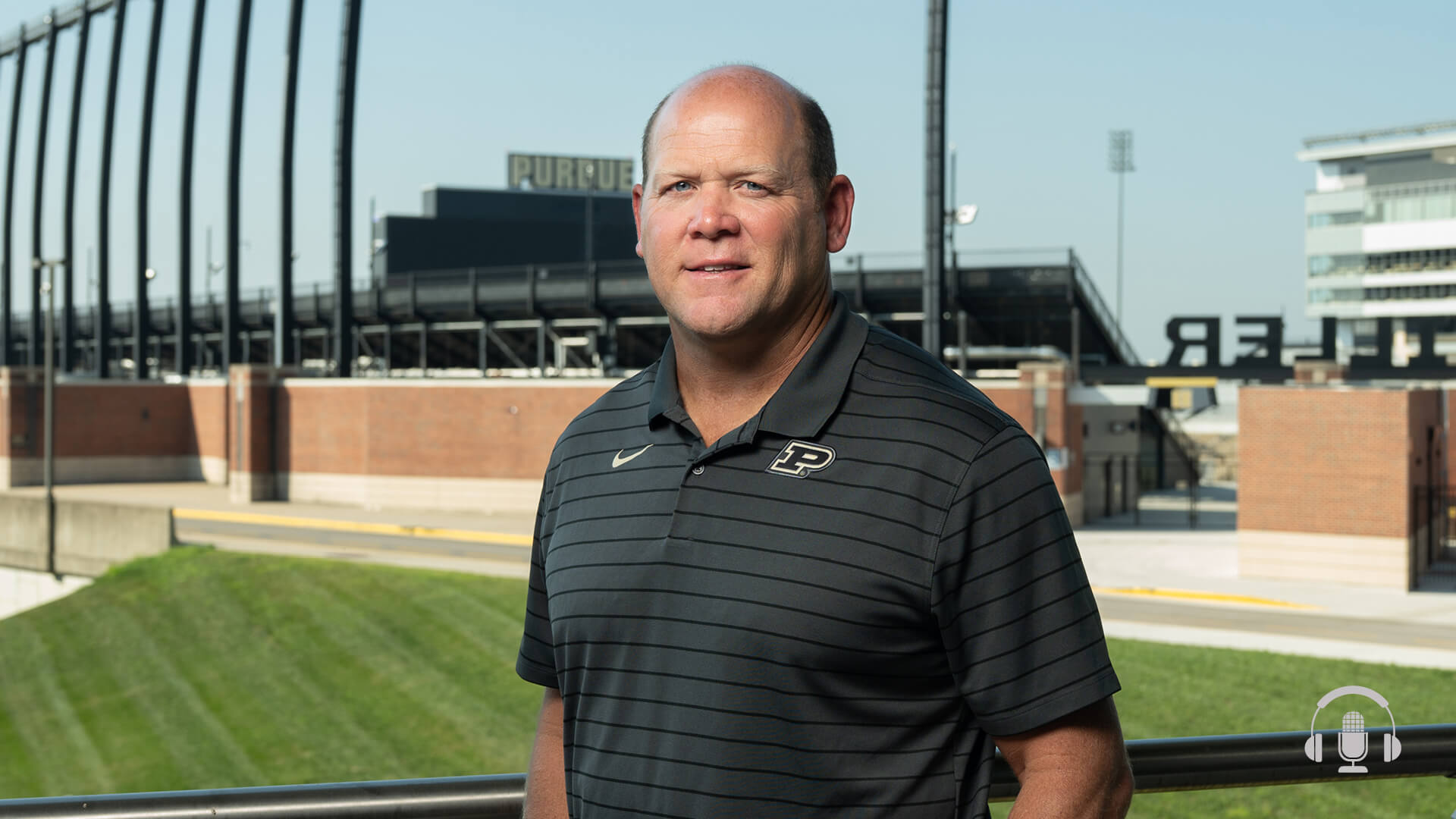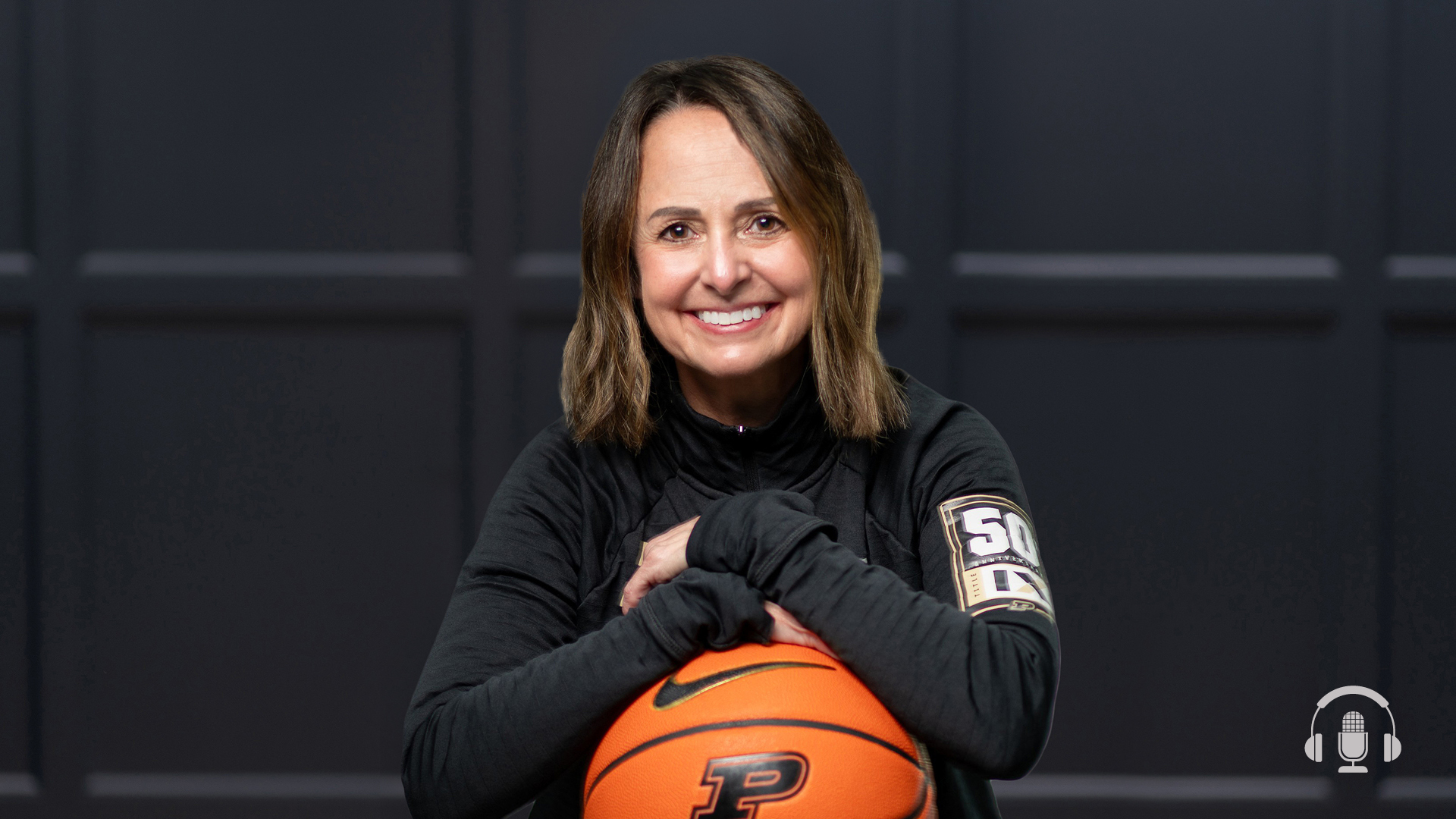Podcast Ep. 91: Purdue Research Series | A Look Into Bioarchaeology and the Ancient Nile River Valley With Michele Buzon
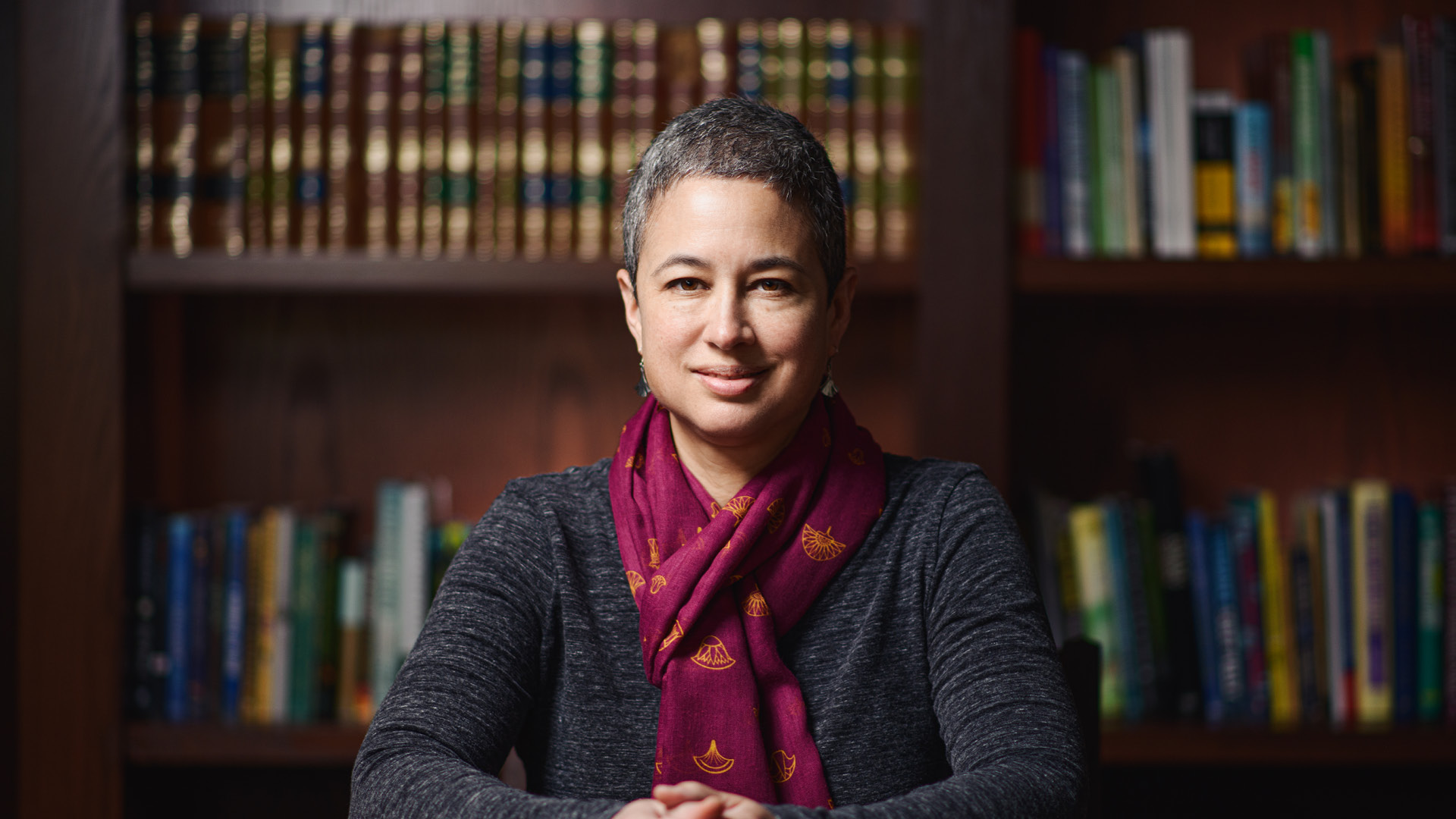
In this episode of “This Is Purdue,” we’re talking to Michele Buzon, professor of anthropology in Purdue University’s College of Liberal Arts.
This marks the final episode in our 2023 Purdue Research Series, which shares how Purdue provides practical solutions to the world’s toughest challenges.
As a bioarchaeologist, Michele’s examination of skeletal remains can help us better understand the lives of everyday people who lived thousands of years ago. She and her team conduct research along the banks of the Nile River Valley in Tombos, Sudan, exploring what life was like in ancient Nubia — and why that still matters today.
Although Michele’s work explores the past, collaboration with researchers like Dr. Randall Loder at IU Health is helping her better understand present-day medical conditions like CAM lesions, an injury on the femur that has been found in young athletes. Previously thought to be a modern issue exclusive to athletes, Michele discusses how she and Dr. Loder found evidence of its existence in the ancient communities she studies.
Hear how Michele’s work brings many different people and disciplines together as she and her team look to better understand the past, from relationship-building with the local community in Sudan to analyzing finds.
- Learn more about Michele’s work and check out photos of her excavations
- Learn more about the College of Liberal Arts
- Learn more about the Department of Anthropology at Purdue
- Learn more about archaeology at Purdue
- Learn more about the Tombos archaeological site
Full Podcast Episode Transcript
Michele Buzon:
This is Michele Buzon, and you are listening to This Is Purdue.
Kate Young:
Hi, I’m Kate Young and you are listening to This is Purdue, the official podcast for Purdue University. As a Purdue alum and Indiana native, I know firsthand about the family of students and professors who are in it together, persistently pursuing and relentlessly rethinking. Who are the next game-changers, difference-makers, ceiling-breakers, innovators? Who are these boilermakers? Join me as we feature students, faculty, and alumni taking small steps toward their giant leaps and inspiring others to do the same.
Michele Buzon:
As an anthropology professor, I of course will say that it’s important for everybody, but understanding humans is important. It’s important for engineering solutions, it’s important for healthcare professionals. For anybody working in understanding humans, you need to realize that people vary in different ways and in order to find the best care, the best solutions, it’s important to be able to recognize those differences.
Kate Young:
Hi, This Is Purdue listeners. You are listening to our fourth and final episode of our 2023 Purdue Research series. Now, so far in this series, we’ve talked to Purdue’s Chief Semiconductor Officer, Mark Lundstrom, on the importance of semiconductors and how Purdue is working with semiconductor industry leaders to train the next generation of workers. We learned more about food safety and security with Purdue food science professors, Amanda Deering and Haley Oliver. And we heard about the research being done with NASA’s James Webb Space Telescope to explore a remnant of a supernova explosion in the Milky Way, Cassiopeia A, with Danny Milisavljevic, Associate Professor of physics and astronomy in Purdue’s College of Science.
Today on This Is Purdue, we’re talking to Michele Buzon, Professor of Anthropology in Purdue University’s College of Liberal Arts. As a bioarcheologist, Michele’s examination of skeletal remains can help us better understand the lives of everyday people who lived thousands of years ago. Michele and her team spend a few months each year along the banks of the Nile River Valley in Tombos, Sudan, exploring what life was like in ancient Nubia more than 3000 years ago, and why that still matters today. See, Michele is conducting her research on Nubian burial sites dated all the way back to 1500 BCE to better understand the relationship between the Nubians and Egyptians during the New Kingdom Empire.
Michele and her longtime collaborator, Stuart Tyson Smith, have worked on digs that uncovered an ancient horse burial found more than five feet underground in a tomb, with some of its chestnut-colored fur still there. And over the years, Michele and her team have unearthed hundreds of artifacts, including pottery, tools, carvings, and dishes. In this episode, you’ll hear how Michele’s work brings many different people and disciplines together as she and her team look to better understand the past, from relationship-building with the local community in Sudan to analyzing finds, so let’s dig in.
Okay, Michele, thank you so much for joining us on This Is Purdue. This is our special research series, so we’re thrilled to get into more of your research focus. So bioarcheology is your specialty. Can you explain more about what bioarcheology is?
Michele Buzon:
Bioarcheology is the excavation and analysis of human skeletal remains from archeological sites. And in looking at human skeletal remains, we can learn about health and disease, daily activities, injuries, diet, these sorts of things in people of the past. And what’s really important about bioarcheology is that it is the window into the past for most people who existed, because while historical records do exist, they don’t exist for everyone. And when they do exist, they’re written by a select few. And so this is really our glimpse that people in the past who have no voice otherwise.
Kate Young:
I asked Michele how social science and natural science interact in bioarcheology.
Michele Buzon:
So bioarcheology is inherently interdisciplinary. We take information, approaches, methods from humanities, from social sciences, from national sciences to create a picture of the past. So we want to know information about languages, philosophy, religion, identity. We also want know about society and culture. And then we use methods from various natural sciences to learn about biology and chemistry and different aspects of humans, to look at health, to look at activities, to look at injuries. And all of that goes in together to create a holistic picture of the past for people.
Kate Young:
And what types of things are you finding what we know about humans of the past translating into what humans are like today?
Michele Buzon:
So we have been working on a number of different topics and we’ve worked with, for instance, modern physicians today to think about conditions that exist such as osteoporosis or different kinds of lesions on the bone. And physicians are interested in learning about the frequency of conditions and how to treat conditions, but we don’t know everything about why certain things occur. So by looking in the past, by looking at skeletons that exist in other places and through time, we can get a sense of what conditions existed to create diseases and exposure to diseases. So we have learned, for instance, that osteoporosis is something that existed long in the past, while it’s often thought to be a modern condition. We have other conditions that we’re still learning about how they exist around the world and through time, so those are some of the things that we can look at.
Kate Young:
And speaking of humans of the past, Michele has been working with Dr. Randall Loder, an IU health physician, to examine certain conditions from skeletons found on her digs that have modern significance today. This team recently published a paper that provides evidence that CAM lesions, which were thought to be related to modern day life, actually existed thousands of years ago. Michele and her team are also working on other studies in the Tombos collection that provide important information about conditions affecting people today, such as osteoporosis, which was the subject of Purdue PhD Caitlin Sanders’ recently completed dissertation. Here’s Michele explaining more.
Michele Buzon:
Specifically, the IU health physician, Dr. Randy Loder, was interested in looking at something called a CAM lesion, which is a lesion on the femur that has been found in young athletes. And it was thought to be the result of modern sports activities by young people, and we found that actually it existed in the past, so it’s not just something as a result of modern conditions. We’re currently also looking at fractures of the hip, something that occurs in older people today. And we have an example of a well-heeled fracture of the hip from somebody who lived 3000 years ago, something that would often result in death of a person today, so it’s quite remarkable to think about what it would take in the past for an individual to survive that sort of fracture, to have the care that would be needed, that they could be at home and have people help them with food and other things to survive.
Kate Young:
And without any medicine, right?
Michele Buzon:
Without any medicine, without antibiotics, without surgery.
Kate Young:
Wow, that’s incredible.
Michele Buzon:
I think the impact lies in a number of different ways. So we can learn more about health conditions in the past and the environmental factors that may have played a role in people experiencing these conditions. But also, we learn a lot about variation in people. So whether it’s biological or cultural variation, we see that people adapted to different challenges, different sociopolitical circumstances, in a variety of different ways, and it is that variation in people that really makes the world go round.
Kate Young:
Okay, so let’s dive deeper into Michele’s digs.
Michele has more than two decades of field experience in Tombos, and her research has been funded by the National Science Foundation, National Geographic Society, and the Institute for Bioarcheology, just to name a few. In collaboration with her team, Michele has recovered more than 200 individuals from the Tombos site. The digs at this site are part of field seasons, which are about two months long. The team excavates for about six weeks and then spends additional time documenting everything. Michele discusses her experience excavating in the Nubian region of modern-day Sudan to better understand interactions between Egyptians and Nubians.
Tell us a little bit about what goes into one of those digs from arriving into the country to being out there and actually doing all of that work.
Michele Buzon:
So I’ve been working at the same site for the last 20 or so years. It’s called Tombos, and it’s in Northern Sudan. We arrive in the capital of Khartoum, and it takes many hours to get to Tombos. So when I first started going in 2000, it took about 16, 18 hours because there was not a road, a paved road that went all the way. Now there’s a paved road, so it’s about an eight to 10-hour drive. We bring our research team, which consists of other specialists, my collaborators, students, all of our luggage and equipment and items that we need for the field season. And we have been staying in a house of a local family, the same family for most of the time we’ve been working there.
So we get there and we unpack and we meet with people in the community, talk about what we’re doing that season, hire some people from the local community to work with us. And then we usually have a specific goal for each season based on our grant funding. And we get started deciding on the site we’re going to work on. We break up into small groups and work in different areas, and as we go along, decide sort of what we’re going to focus on next. So I work on cemeteries, which means we’re excavating human remains and all of the things that are buried with them, looking at their tomb structures. So we take the human remains and the materials that we excavate each day back to the dig house, do some cleaning, some analysis, and begin finding out what we can about the people in the past. It is a lively group. We spend a lot of time together working, eating meals, walking along the Nile. We often also have meals and tea with families in the community as well.
Kate Young:
Why is it so important to get the community in Sudan involved in what you all are doing and understanding what you are doing?
Michele Buzon:
So as archeologists, we are creating and producing knowledge about the past. We’re learning new things about people who lived before us. And it’s important not to just have foreigners come in and tell that story. The Sudanese are best suited to create the knowledge about their own past, about their own heritage. So I think it’s really crucial to work together with people in the community, with Sudanese archeologists to create this knowledge of past.
Kate Young:
In fact, over the winter, Michele spent two weeks in Sudan hosting a workshop on bioarcheology at the International University of Africa. She said her long-term goal is to develop a degree program in bioarcheology since there aren’t many training programs in that area. As you just heard, Michele and her team want this archeology in Sudan to be a truly collaborative effort with Sudanese researchers.
Michele Buzon:
There aren’t many opportunities in Sudan at the universities to gain training in bioarcheology or to get a degree in bioarcheology. So my co-director, Mohamed Faroug Ali, who is a professor at International University of Africa, and I have been working to build a curriculum for archeology at that university to work together to train students. So this was a great first opportunity to introduce many students as well as some other professors who want to learn more about it for their teaching. And we hope to do many more in the future.
Kate Young:
Michele discusses more on the Sudanese culture and how Purdue students are involved with these digs.
Michele Buzon:
Sudan is a place that a lot of people don’t know much about. It is a bit of the unknown. We try to give a guide about what it’s like, but it’s hard to really describe until you go there. The Sudanese are known for their amazing hospitality, and this is something that I think really impresses and makes an impression on people. They go there and they find a community that’s so welcoming, so friendly. And the research is really interesting. It’s exciting to be in a place where you can come up with new discoveries and find things that we didn’t know much about in the past. So for instance, the study that I talked about with Randall Loder, I had an undergraduate work with us, Sarah Coon, she just graduated last year. We published a paper on that study and now she’s doing a PhD program and won a fantastic fellowship to do her work. So getting research experience, having that hands-on experience in the lab I think is crucial for students to be able to show that they can come up with projects, finish projects, do some great research.
Kate Young:
What is it like immersing yourself in the Sudanese culture when you’re there?
Michele Buzon:
It’s a really fantastic experience. So before I first went to Sudan, I hadn’t really been to that part of the world before, and so it was all new to me. Like I mentioned, the Sudanese are known for their hospitality, and they’re warm and welcoming, and they have become my family. I’ve been working there for more than 20 years. We see the same people every year. We see their kids, we see them grow up, and it’s been a wonderful place. Food is different but fun to try new things, have people make food for us and the team. Living along the Nile is really lovely. The sunsets and the sunrises are amazing to watch. It’s a lovely environment to live in.
Kate Young:
Okay, so when most people think of ancient Egyptian culture, they think of the Nile River and deserts and gold and pyramids, at least that’s what I always think of. But Michele says there were several societies that rose to great power in the Nile River Valley, not just the Egyptians. And these communities are often overshadowed.
A lot of people think ancient Egyptians and Cleopatra. That’s the exciting part of this. But what do you wish people knew more about with the ancient Nubians, which you are really focused on right now?
Michele Buzon:
So for most of ancient Nubians past, we don’t have written records. So what we know about ancient Nubia primarily came from Egyptian texts, which we’re understandably biased. They were enemies for a lot of their history. So what we’re able to do through bioarcheology is to write that record that was not there before. So for instance, the site of Tombos is an Egyptian colonial site. So that site was created by Egyptians during the time that they were occupying Nubia. And this period, and then the period after, has often been referred to as the Dark Ages because we didn’t know exactly what happened.
The research that we’ve been doing at Tombos has provided a way for us to understand that Nubians were actually still very strong. They were asserting their identities. Their culture was noted subsumed by Egypt. And after the Egyptians left, after their empire fell apart, the Nubians persisted, they were resilient, and eventually they went on to rule the entire Nile Valley. So they were active leaders in the Near East and the Circum-Mediterranean world, and ruled from Central Sudan all the way to the Mediterranean. So it was really an amazing culture and amazing society that I feel like not everybody learns about.
Kate Young:
Michele expands on the relationship between the Egyptians and the Nubians.
Michele Buzon:
There were times during Egyptian and Nubian history where they were certainly enemies, but our researchers also found that they worked together and lived together in communities. So for instance, at Tombos, while it started as an Egyptian colonial community, we know that the Egyptians interacted with the Nubians. We know that the Egyptians interacted with the Nubians and became families. There are generations of people who have both Egyptian and Nubian features in their burials, and that community persisted after the end of the Egyptian colonial period. So there are times of conflict, but there’s a lot of interaction, and there’s peace, and there is resilience through these cultural changes that occurred over time.
Kate Young:
I asked Michele what her most aha moment has been in her more than 20 years of research in Tombos so far.
Michele Buzon:
It’s definitely related to those sorts of discoveries about what the Nubians were doing when the Egyptians had occupied their land. We sort of expected that everybody would take on these Egyptian cultural features and go along with the Egyptians, but that’s not true. They were asserting their independence, their identities, and showing that their Nubian culture, their Nubian identity, was there all along and never disappeared.
Kate Young:
And as for the most challenging part of her research so far in her career, well, when she ran into a roadblock, she pivoted and persisted like a true boilermaker.
Michele Buzon:
So we never really know what we’re going to find in the ground. We write grant proposals, we come up with ideas, but until we start actually excavating, it’s a surprise. So we had started working on these pyramid tombs at Tombos. They’re very deep. They’re several meters deep into the ground. And when we started excavating them, we found that they were actually being affected by groundwater. So the remains inside, the soil inside, was actually quite damp, which means the preservation of materials wasn’t very good, and it made it difficult to work on these tombs. That’s pretty disappointing when you think the thing that you’re starting to work on isn’t going to work out.
So what we realized is that there were small subsidiary graves, these pits, around the big tombs, which we only started finding when we were clearing around the large tombs. And what came of those pits was that this is where the children were being buried, where some of the younger individuals were being buried. We hadn’t found many children at Tombos over a few different seasons of excavations, and so this was actually a really great discovery, that the children were being buried in these types of graves, and that we could increase the sample of that segment of the population and learn about the children.
The children are really key in understanding health in a community and also understanding society. So one of my graduate students who finished her PhD a few years ago, Katie Whitmore, she worked on the children and health and found some really interesting things. So for instance, individuals around the time of puberty, so early teens, were the ones who had a lot of issues in terms of health. This is a time period where they’re leaving their families, they’re starting their own families, they have more work opportunities. And so by increasing this sample of younger individuals, we were actually able to learn more about society and what people were experiencing.
Kate Young:
So if you’ve listened to our three other research series episodes, you’ll know I’ve asked this next question to each of our incredible researchers. What would happen if Purdue wasn’t doing this innovative research?
Michele Buzon:
So anthropology is a field that not that many people know about. And we have worked hard to introduce it to the public, to introduce it to younger kids by visiting their schools, by going to community events like Boo at the Zoo and other sorts of things to try to introduce anthropology to people. When I went to undergraduate, I was interested in history. I was also interested in health, my father is a retired physician, and I was also interested in different cultures. My father is an immigrant from the Philippines. And so going to school, I didn’t realize that that was something that I could all do together. And when I took my first anthropology class, it was sort of an aha moment of learning that I can combine all of these interests into something that I could pursue a career in. And I’m fortunate at Purdue that we do have colleagues in these different areas where we combine culture and religion and philosophy as well as society and different aspects of human life to create the best solutions for our problems today.
So in anthropology, we are working in our teaching and our research and our engagement with different partners across campus, in engineering, in technology, in health and many other areas to show people as a public university with the service mission, as a land grant university, that understanding humans in a holistic way is the best way to address our challenges. I feel like I’ve made an impact in terms of bio archeology in Sudan, and certainly I have a lot of wonderful colleagues who are working there as well. But I feel like with my collaborators, Stuart Tyson Smith at UC Santa Barbara, Mohammed Faruk, my Sudanese collaborator, that we have shown researchers how to do this in a very interdisciplinary and collaborative way where we are taking information from all of these different disciplines and from different specialties and doing it together rather than sort of having it separate. And so I feel like we have made an impact in terms of how to holistically look at the past through different approaches.
Kate Young:
And why does this research matter to every single one of us on this planet?
Michele Buzon:
As an anthropology professor, I of course will say that it’s important for everybody, but understanding humans is important. It’s important for engineering solutions, it’s important for healthcare professionals. For anybody working and understanding humans, you need to realize that people vary in different ways. And in order to find the best care, the best solutions, it’s important to be able to recognize those differences.
Kate Young:
I asked Michele how the research being done here at Purdue is unique to how other institutions may be conducting their research.
Michele Buzon:
So what I think is interesting about anthropology at Purdue is that we are a top tier research university and a land grant university, and that means that we have a public service message. So at Purdue, we are unique in that anthropology is doing both. We’re doing exciting, innovative research, but also making sure that we impact the public. And so our teaching, our research, our engagement, it’s all done with this goal of making sure that we are doing our best to prepare students to provide information to the public about how a holistic approach to understanding humans can help us solve the problems of the world today.
Kate Young:
And how do you think Purdue is advancing the field of bio archeology and supporting you in your research?
Michele Buzon:
I’ve been really fortunate, I feel like, to have the support of my department, my college, my university, in pursuing my career goals. So that started in my early years with seed grants, with resources to help my lab get started, and support for students as well. And so I have trained a lot of undergraduates and a number of graduate students working on Nubian bio archeology to gain experience. Some of them are going onto graduate school, some of them are using those skills out in the world today, and we have been able to learn a lot about Nubian bio archeology that we didn’t know before.
Kate Young:
Now, let’s dive into Michele’s Purdue journey. Michele received her PhD from the University of California Santa Barbara, and kicked off her career at Purdue in 2007 as an assistant professor of anthropology. She stayed here for her entire career, being promoted throughout the years from assistant to associate to full professor. I asked Michele what led her to Purdue back in 2007.
Michele Buzon:
When you finish a PhD, you never really know who’s going to be hiring, so it is a bit of a surprise. And when I saw that there was a job at Purdue, I was excited about the potential of working at a great research university and also coming back to the Midwest where our families are. This job meant that I could join some colleagues already doing some great research. And at the time, in 2007, Purdue anthropology was expanding, and so that was really exciting for me as an assistant professor…. anthropology was expanding. And so, that was really exciting for me as an assistant professor, to be part of this great expansion of the department. I was also already familiar with Purdue. My brother graduated with his bachelor’s in aerospace and aeronautical engineering, so I had come here a few times when I was younger. I remember his college graduation. It’s a little bit different than the mid-nineties.
Kate Young:
It’s a little bit bigger now, right?
Michele Buzon:
Yeah.
Purdue has supported my career in ways that you only dream of when you start in graduate school. It’s been a wonderful place to feel supported in my research and to be able to attain my goals as a researcher. I feel fortunate to be a professor here. I feel fortunate to have the ability to continue to conduct research in a place where I can take advantage of our excellent colleagues in humanities, in social sciences, in natural sciences, across the campus in ways that I think doesn’t exist on all campuses.
Kate Young:
Michele reflects on one of her favorite memories from her time at Purdue.
Michele Buzon:
2017 was pretty exciting. That was the year that I made full professor, which is a really exciting accomplishment as a professor. And it was also the year that I won the LuAnn Aday Award, which is the top research award for humanities and social sciences at Purdue. So that was really rewarding, to feel like my colleagues respected my research and were excited about what I do.
Kate Young:
Now, Michele teaches a variety of classes here at Purdue, from archeology of Ancient Egypt to human evolution, to mortuary practices across cultures, but she says she can’t pick just one as her favorite.
Michele Buzon:
A lot of my classes are my favorite classes. It’s hard to come up with one. So, human osteology is the class that is really my specialty, in terms of looking at the skeleton and teaching students what you can learn from the skeleton. And that’s a class that attracts anthropology students, but also medical students.
And I was just speaking to a former student yesterday who’s going to medical school, and she said, “That was actually the most hands-on I had with anatomy,” in her undergraduate career. You learn some anatomy in different classes, but in my class you learn all the parts of the skeleton and how to identify fragments. And so, that’s really exciting.
I also teach a class on the archeology of Egypt and Nubia and some classes on human variation in general that I really enjoy.
Kate Young:
Michele met her husband in Jordan while doing field work over there, and he’s also an archeologist and Purdue professor. The couple has an 11-year-old son who has traveled with Michele on some of her digs.
I read that your son has joined you on some of these digs. What is it like having him there? What does he think about your job? He’s got to think, “My mom has the coolest job ever,” right?
Michele Buzon:
I’m his mom, so sometimes he thinks I’m cool, sometimes not so much. He’s 11 now, so since he was quite young, I’ve been doing field season. And he would tell people, “My mom is digging in the sand or digging in the desert,” but he didn’t really know what that meant.
And so, in 2020 we had an opportunity for him and my husband to go with us to visit the field site, and he was super excited to see where I’ve been going all these years, and he was really excited to meet the people that I’ve talked about. It was super meaningful for me to introduce my family to the Sudanese community, because like I mentioned, they’d become my family. And it meant a lot to them to meet my family and to spend time with them.
He loved learning about archeology. He was ready to dig, to move dirt, to sift, to do all parts of it. He even wrote an essay about it in his class the next year, about digging in the dirt. And so, he was super excited to be there. He also has traveled with us a lot. He is the son of two professors, so he’s been around the world. He likes trying new foods and learning about new people, so it was fantastic, and he can’t wait to go back.
Kate Young:
How is it leaving your family for that long when you have to go over there for two months? Are there a lot of FaceTime calls?
Michele Buzon:
Internet is not always great, so phone calls are about the extent of it most of the time. It is hard at first, but I think as somebody who’s traveled a lot, and as the son of two professors who go to conferences and do research, this is just part of our life. We function, we travel, we move around the world. We always come back and we’re happy to see each other.
Kate Young:
And speaking of Michele’s son, he’s an avid Purdue athletics fan.
You talked about your brother graduating from here. You already had some fond memories of Purdue. What does this community and this Boilermaker spirit mean to you?
Michele Buzon:
Over the last year, I think my son has actually taught me a lot about Purdue and Boilermaker spirit. He is a big sports fan. He’s a big sports player. And I’ll confess, I haven’t always been a big watcher of sports, but because of him, we’ve been watching a ton. And it’s been super exciting and fun to watch the basketball team and other sports teams over the year. And I have gained a Boilermaker spirit in a way that I didn’t know I had before.
Kate Young:
Watching it through his eyes?
Michele Buzon:
Yes.
Kate Young:
I love that Michele’s son has expanded her Boilermaker spirit even further. Michele touches on what the Boilermaker persistence means to her.
What does persistence mean to you? I’m sure you’ve had a lot of digs that maybe weren’t the most successful, or you had to pivot, like you’ve talked about previously. What does that word mean to you?
Michele Buzon:
Adapting to what’s been given to you and what’s at hand. And really, my research has shown me how people can persist through all sorts of different circumstances. Looking at the past, looking at times of difficulty, and seeing that people are resilient and they figure out ways to make life work and to move forward. And so, I try to do that myself
Kate Young:
And she shares her next giant leap.
Michele Buzon:
So, I really want to contribute to the people who helped get me where I am today. And for me, that’s the Sudanese. I am working hard to try to provide training opportunities to help students learn about bioarcheology and become bioarchaeology in Sudan, and to work collaboratively with my Sudanese professors and colleagues to help make those projects truly collaborative.
Kate Young:
We can’t thank Michele enough for joining us on This is Purdue. Head over to our podcast YouTube page, youtube.com/@thisispurdue to check out our full video interview with Michele.
And if you’d like to check out the photos of Michele’s digs, trust me, you definitely want to check them out, we have that article linked in the episode show notes for you.
This is our last Purdue research series episode for 2023, but we’ll be back next year with a whole new research series, so be sure to follow This is Purdue wherever you get your podcasts.
This is Purdue is hosted and written by me, Kate Young. At this special podcast shoot for our fourth Purdue research series episode, our videography was led by Ted Schellenberger, in collaboration with John Garcia, Thad Boone, Allie Cheney, and Zach Mogenson. We also had production assistance from Carly Eastman, Maria Welch, and Delaney Young. Our social media marketing is led by Ashley Shroyer and Maria Welch. Our podcast photography for this shoot was done by Rebecca Robinos. Our podcast design is led by Caitlin Freeville. Our podcast team project manager is Emily Jesalutis. Our podcast YouTube promotion is managed by Megan Hoskins and Kirsten Bowman. Our podcast research is led by Sophie Ritz and additional writing assistance is led by Joel Meredith.
Thanks for listening to This is Purdue. For more information on this episode, visit our website at purdue.edu/podcast. There, you can head over to your favorite podcast app to subscribe and leave us a review. And as always, Boiler up!
